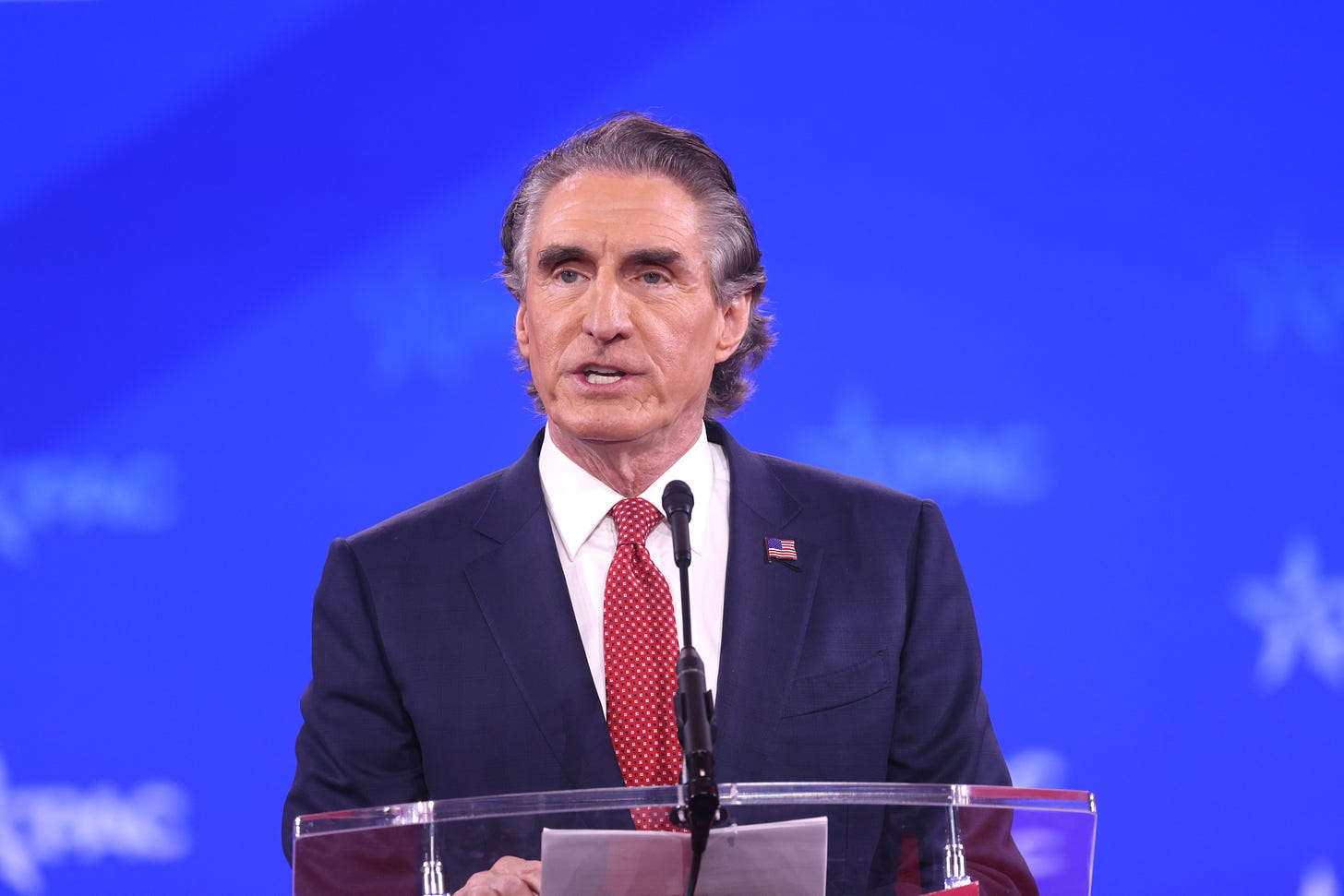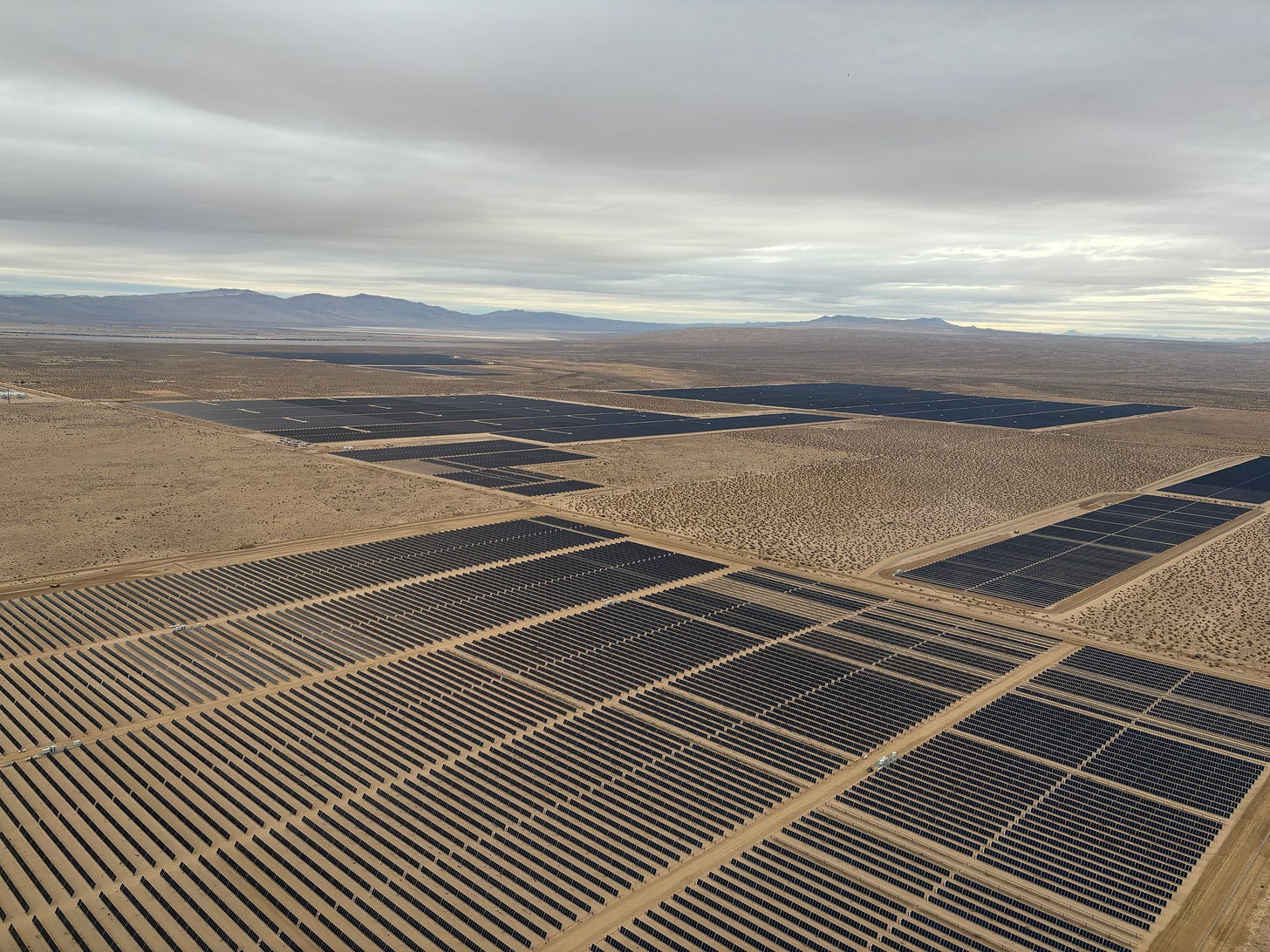Trump is canceling solar now, too
Until this month, federal officials had only blocked wind farms. No longer.
“The devil dwells in Esmeralda” — Claude Frollo, “The Hunchback of Notre Dame” (stage musical)
The panel I moderated at the Los Angeles Business Council’s Sustainability Summit this month didn’t yield any earth-shattering revelations.
But when I asked a renewable energy executive about the Trump administration’s refusal to approve solar projects on public lands, his response left me baffled.
Yes, he acknowledged, Trump’s appointees were trying to cancel offshore wind farms. But thus far, they hadn’t blocked any proposed solar projects. All those solar proposals were still in limbo. Federal officials had merely slowed down the approval processes.
“So far, there’s no bad news. There just isn’t any news,” said Ryan Pfaff, an executive vice president at EDF Power Solutions.
Turns out there was bad news. We just didn’t know it yet.
About two hours before our panel, the U.S. Bureau of Land Management quietly updated its website to reflect that it had canceled a cluster of seven proposed solar farms in Nevada’s Esmeralda County (not far from the California border). The news was first reported by Heatmap’s Jael Holzman later that night.
Collectively, the “Esmeralda 7” would have been by far the nation’s biggest solar project, producing a bonkers 6.2 gigawatts of power (with 5.2 gigawatts of battery storage). California’s Diablo Canyon nuclear plant generates 2.2 gigawatts.
So now it’s official: The U.S. government is gunning for solar farms — not just the wind turbines Trump loves to hate. The president claims we have a “ national energy emergency,” yet his administration is actively impeding one of the nations’s cheapest, fastest-growing electricity sources.
Post-Esmeralda 7, will the folks running the solar industry finally come to grips with our hostile new reality? Will they stop begging the MAGA bosses to let them into the “energy dominance” club and start coalescing around a new strategy?
If those questions sound familiar, it’s possible you read my penultimate column for the L.A. Times, where I wrote that “energy dominance” is very clearly a lie, designed to obscure Trump’s true goal of promoting fossil fuels at all costs.
So I raised my eyebrows as Pfaff told Sustainability Summit attendees that renewable energy companies looking to build on federal lands should make the case for their projects “based on their merits, which are: there’s a need for the power, it’s creating jobs in the area, there aren’t a lot of alternatives.”
Right, because Trump’s appointees can totally be won over with rational arguments. That will definitely work.
I feel bad singling out Pfaff, who was just doing his job under difficult circumstances. The truth is, this pretense — this insistence that Trump’s lackeys can be persuaded to support renewables for the good of the country — is an industry-wide problem.

The demise of Esmeralda 7 wasn’t hard to see coming. It was Trump 2.0’s first solar cancelation, but it probably won’t be the last. This was the plan all along.
Which is why the solar industry should quit clamoring to win over the White House and instead focus on the story it’s telling the American public.
Solar power will be around for a long time. A lot longer than Trump. People need to know that it’s cheaper, healthier, more abundant and faster to build than fossil fuel infrastructure — and when paired with storage, just as reliable if not more so. The U.S. should go big on solar to break free from oil and gas, save money, clean our air, keep the lights on and beat China.
That’s a powerful story.
It’s also a political story. Aggressive, adversarial even. I’m suggesting that renewable energy companies — which have spent years working to transcend partisan politics — go on the offensive and pitch themselves as better than fossil fuels.
An offshore wind energy ad by the Swedish company Vattenfall, starring a delightfully foulmouthed Samuel L. Jackson, might serve as a useful starting point. A reader also pointed me to a clever new electric vehicle ad from Lucid Motors, in which the actor Timothée Chalamet and his bride get stuck in the desert after their motorcycle breaks down — only to sneak into a heavily guarded compound and steal a sleek electric SUV with 450 miles of range.
Those could be winning messages. Not with Trump over the next three years, but with the American people over the next 30.
I know certain folks who work in clean energy might think plunging into the culture wars is one of the stupidest things they could do.
But like it or not, they’re already part of the culture wars. The fossil fuel industry and its right-wing allies made sure of that a long time ago. They convinced large swaths of the American public — and crucially, Republican Party leaders — that solar and wind energy are a “woke” scam. That’s why Esmeralda 7 got axed.
Renewable energy executives can keep pretending U.S. politics will eventually go back to normal. Or they can get to work winning hearts and minds.
In other news: Where will all the solar go?
I was disappointed to see that the California Farm Bureau Federation helped block a bill that would have made it easier for farmers in water-stressed areas to replace crops with solar panels. Assemblymember Buffy Wicks, an Oakland Democrat, told Politico she paused the bill because of “concerns” from Gov. Gavin Newsom’s office.
Approving this bill should have been a no-brainer for Newsom and the Legislature. California needs to take huge amounts of agricultural land out of production to deal with groundwater overpumping and climate-worsened drought. It also needs lots of solar panels to replace gas-fired power plants. Win, win.
But the farm bureau pushed back, arguing the bill would have weakened protections for some of the state’s most productive agricultural ground.
As with most climate solutions, there are trade-offs. The more solar projects get built on farmland, the fewer will be needed in the desert, where they can tear up wildlife habitat. Esmeralda 7 was controversial for that very reason.
Another important wrinkle: Rooftop solar won’t be enough to meet all our electricity needs (even without AI). People telling climate stories — journalists, activists, artists — should do their best to highlight these complexities.
10 years since Aliso Canyon
Do you ever have one of those moments where you stop and think, “Holy crap, how has it already been 10 years?”
That was my reaction seeing Hayley Smith’s L.A. Times story about the 10-year anniversary of the Aliso Canyon gas blowout. Starting on October 23, 2015, the San Fernando Valley gas storage field — which is owned by Southern California Gas — coughed up 109,000 tons of heat-trapping methane pollution, while also releasing toxic chemicals into nearby Los Angeles communities. The leak lasted nearly four months. It was the worst natural gas well blowout in U.S. history.
Newsom promised to try to get Aliso shut down by 2027. Sadly, he’s done nothing of the sort. He’s allowed the L.A. Basin to remain wedded to gas as a dominant fuel for electricity and heating, which effectively means Aliso must stay open.
Here’s hoping California’s next governor does better.
A few more stories

Energy and water:
California has managed to go three years without a Flex Alert asking people to save electricity. How? It’s the batteries! (Hayley Smith, L.A. Times)
With hydropower production falling at Hoover and Glen Canyon dams, some utilities are turning to solar. (Brett Walton, Circle of Blue)
After a historic dam removal, salmon have finally reached the Klamath River headwaters in Oregon. (Kurtis Alexander, San Francisco Chronicle)
California Gov. Gavin Newsom vetoed legislation that would have required data centers to report their water use. (Ian James, L.A. Times)
Everything else:
The Arizona Republic’s Joan Meiners is biking the Arizona Trail to see the effects of climate change. Her first dispatch features a wildfire burn scar.
The Colorado River Indian Tribes are poised to grant personhood rights to their life-giving river. (Debra Utacia Krol, Arizona Republic)
Pope Leo XIV is picking up where Francis left off on climate. (Brian Roewe and Justin McLellan, National Catholic Reporter)
Kevin Costner is having trouble securing funds to finish his epic Western film series, Horizon. Am I the only one who loved Chapter 1 and is eagerly awaiting Chapter 2? (Peter Kiefer, the Hollywood Reporter)





And this is just one of many reasons Newsom should never be president, and I say that as a lifelong Democrat.
Nice to hear the thoughts from your panel, particularly after the legislative session. https://www.youtube.com/live/m0eOsktbU6M?t=13829s
I'd love to see the Coastal Commission require building electrification through their permitting process, similar to how they required certain hospitality businesses to provide no single use plastics. Given their focus on sea level rise and climate change, reducing fossil fuel use would be a do too. I’ve not looked into the issue since 2024. If nothing has changed, how about a 2026 bill to address it?